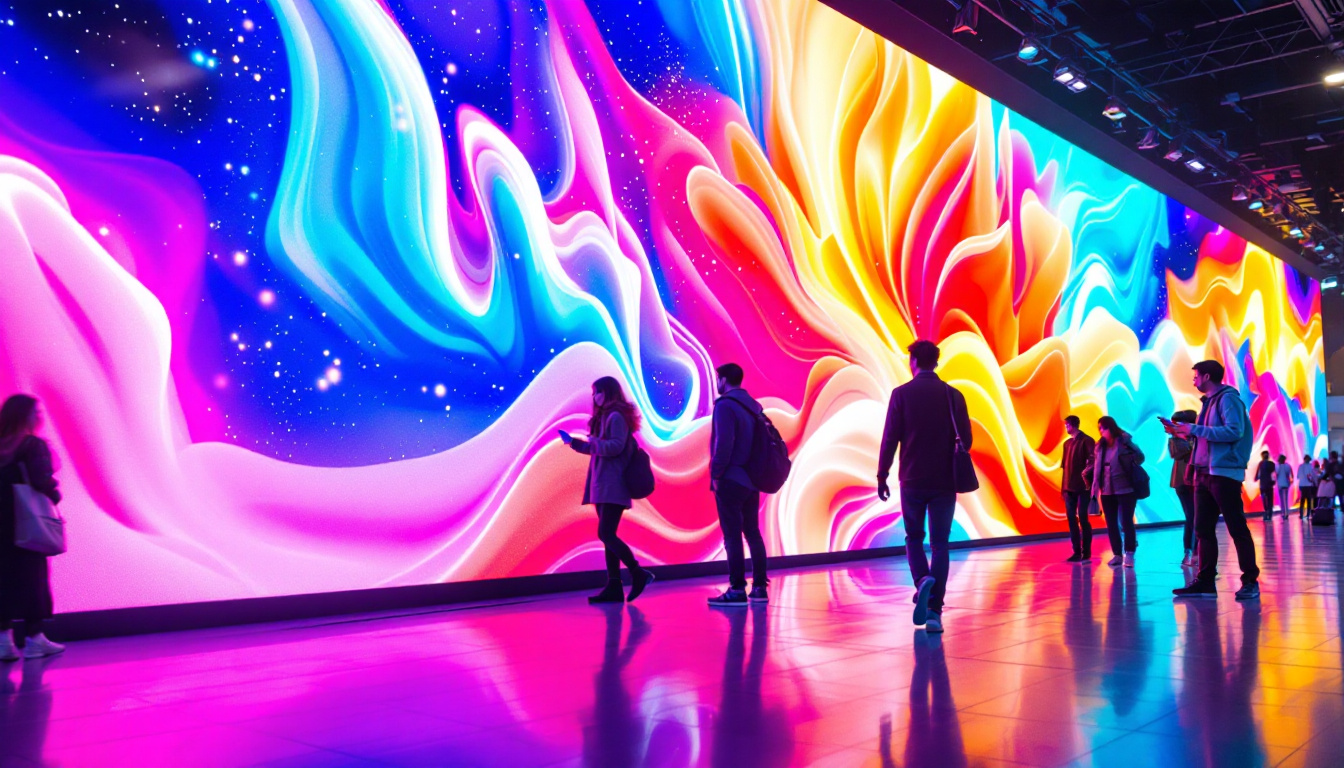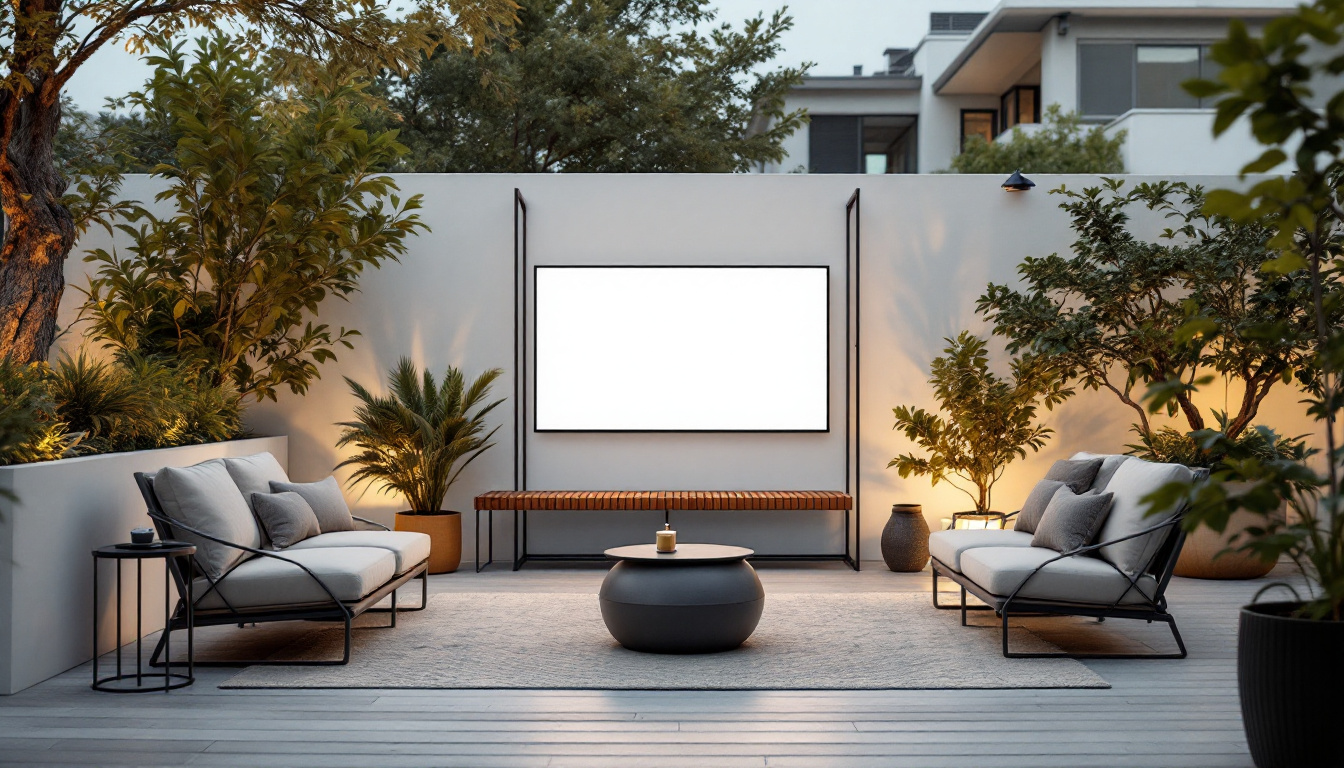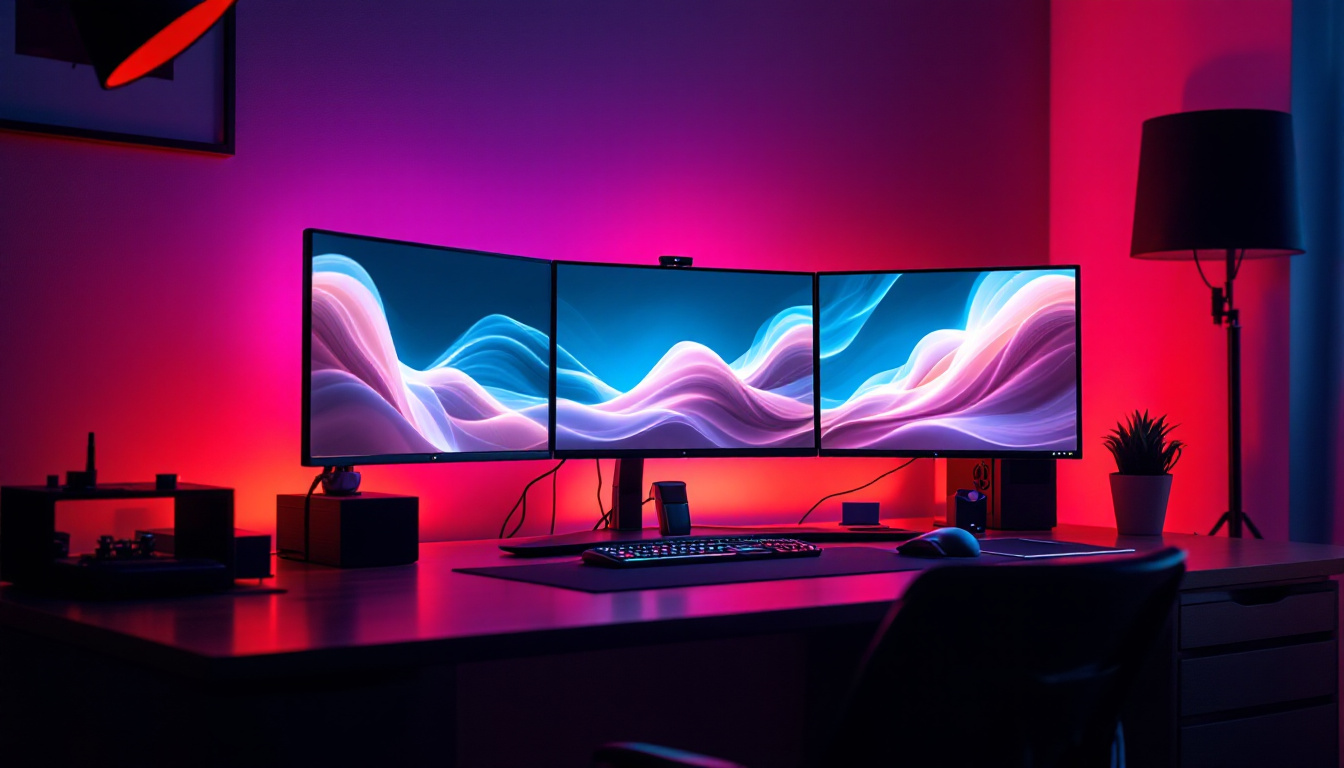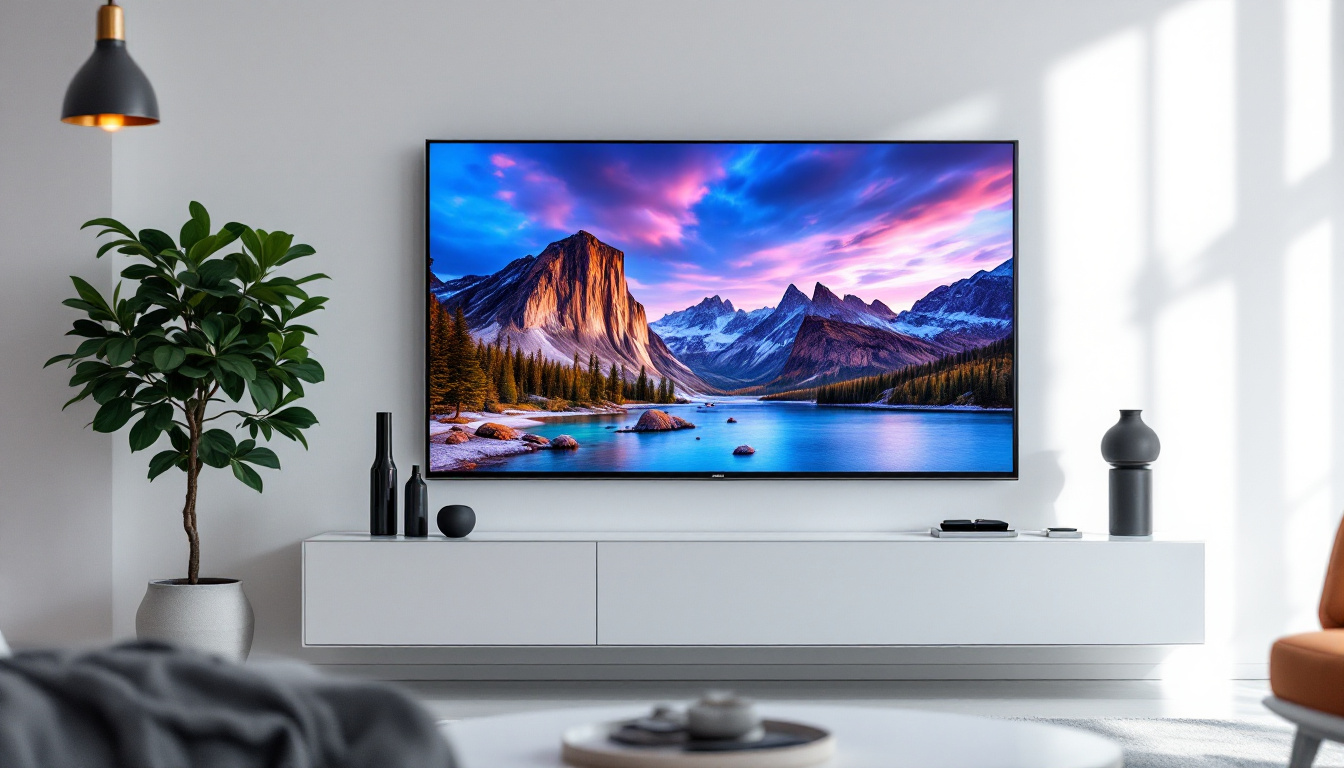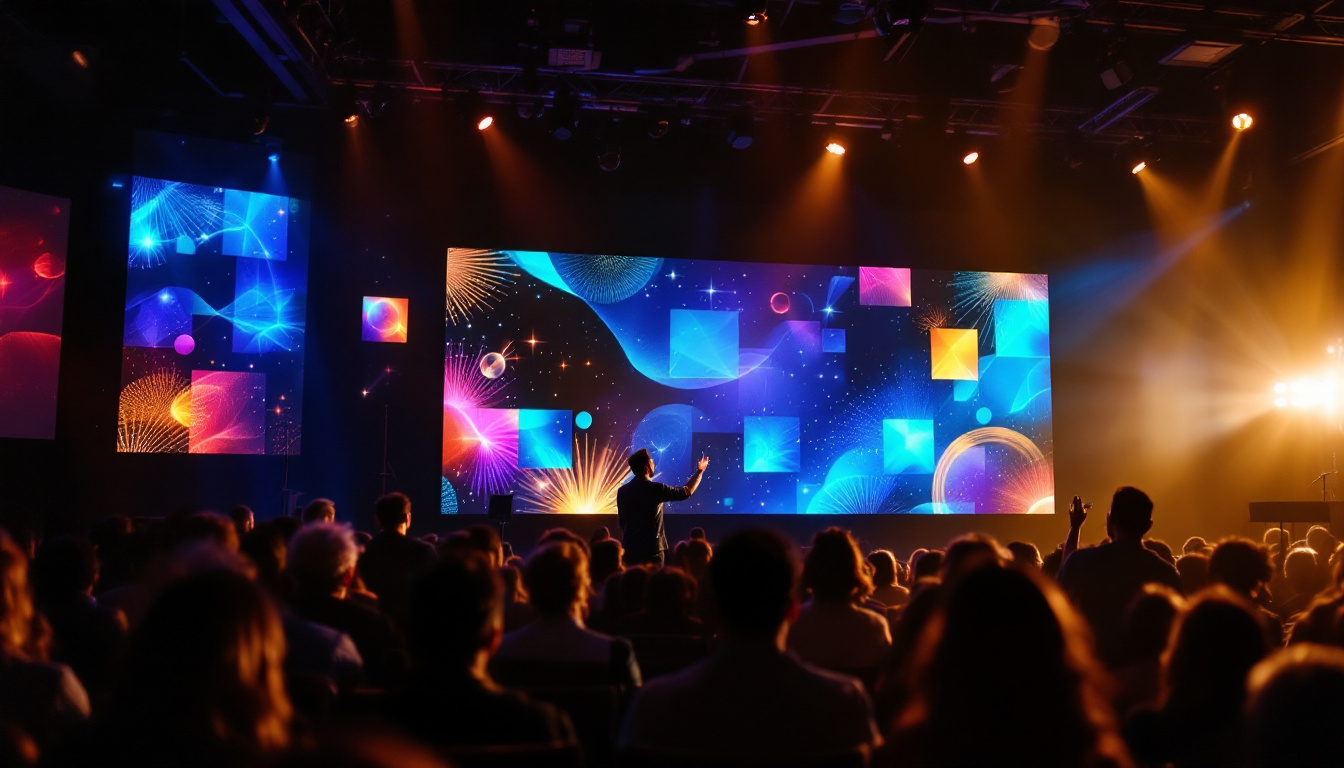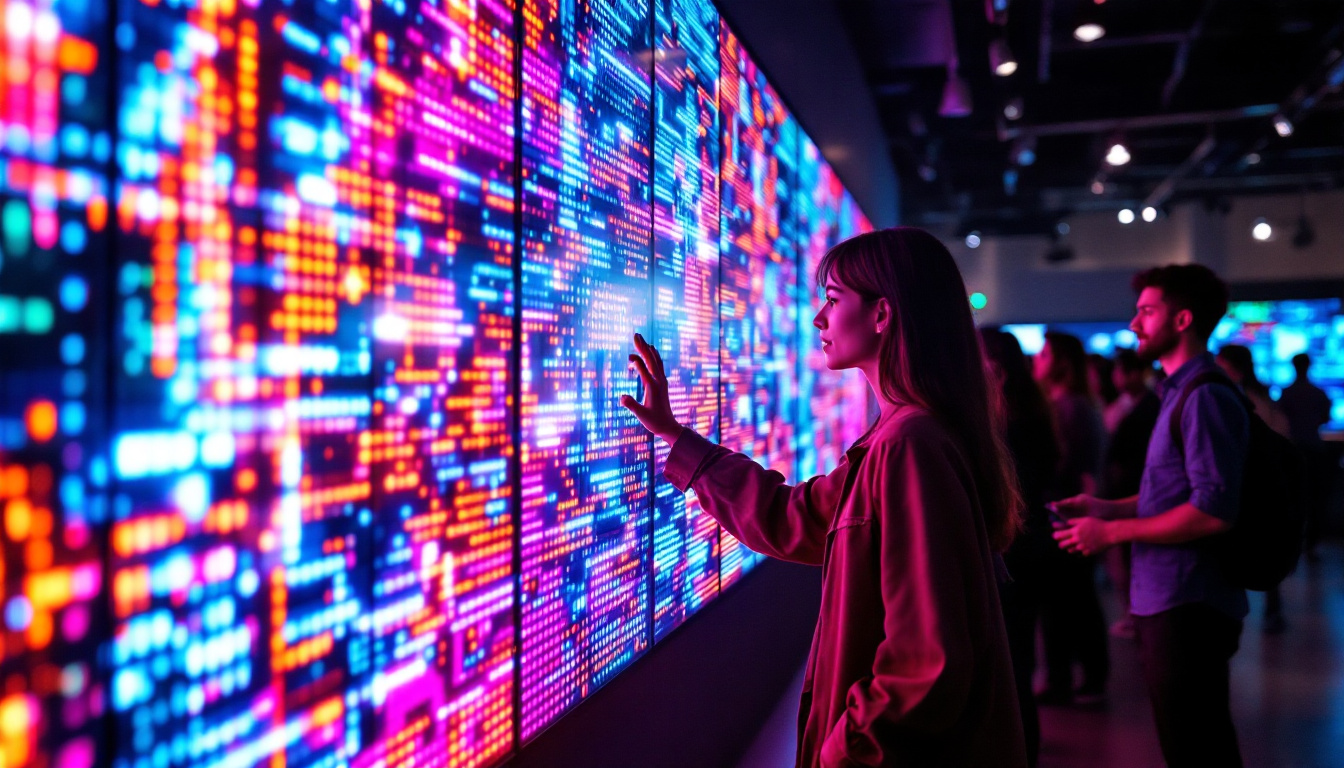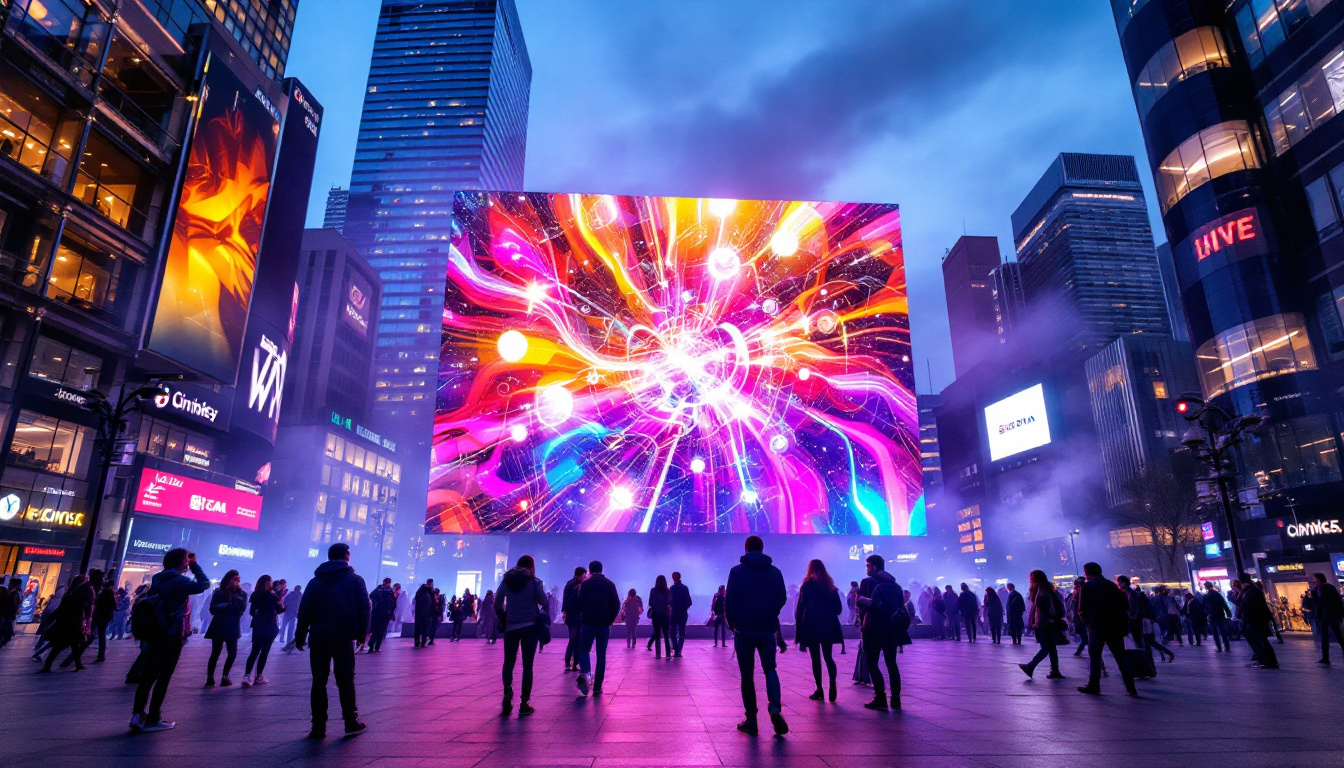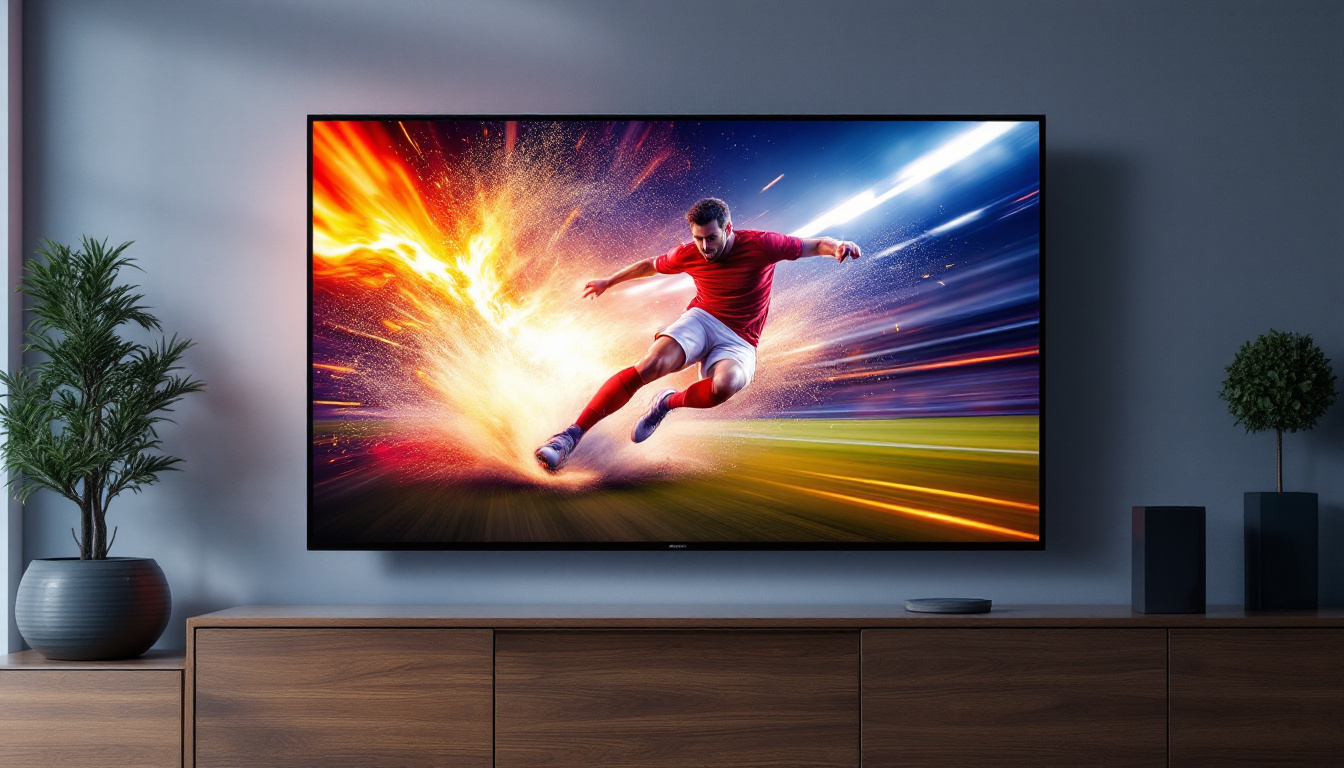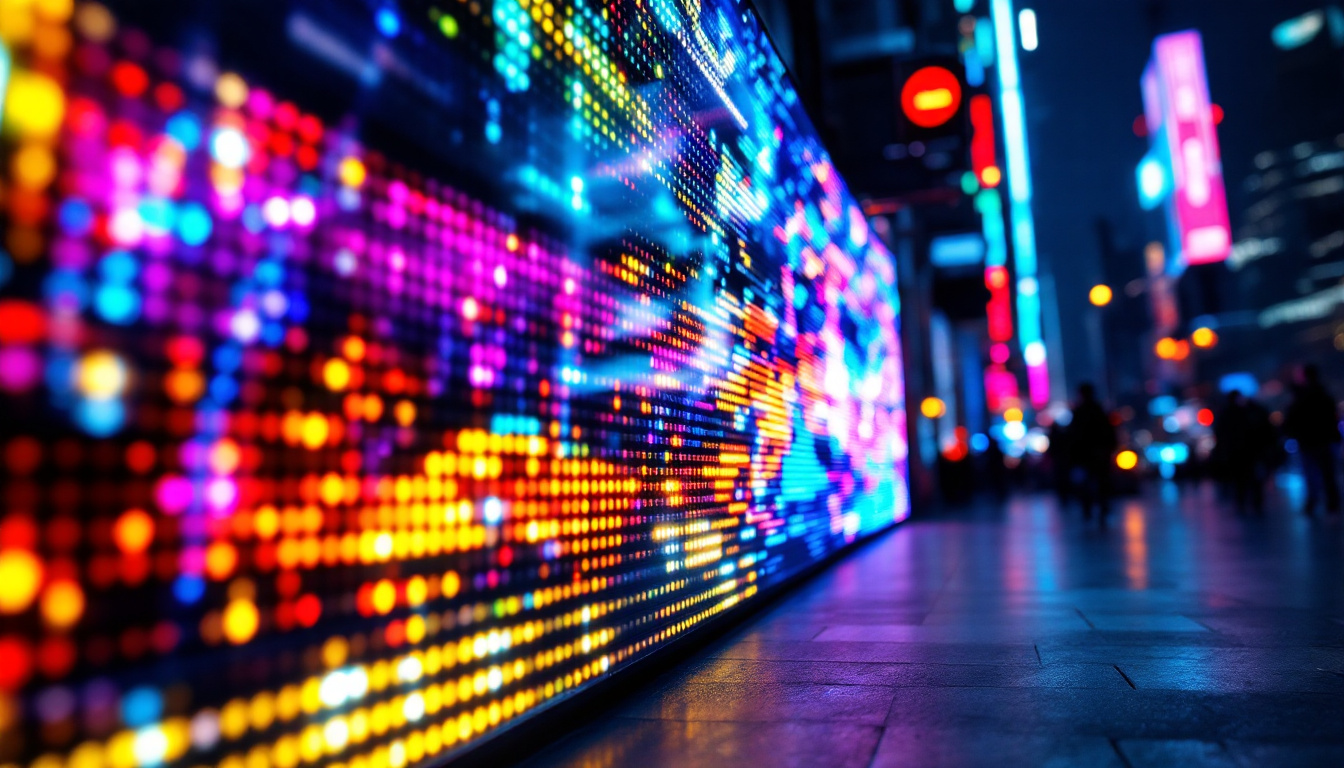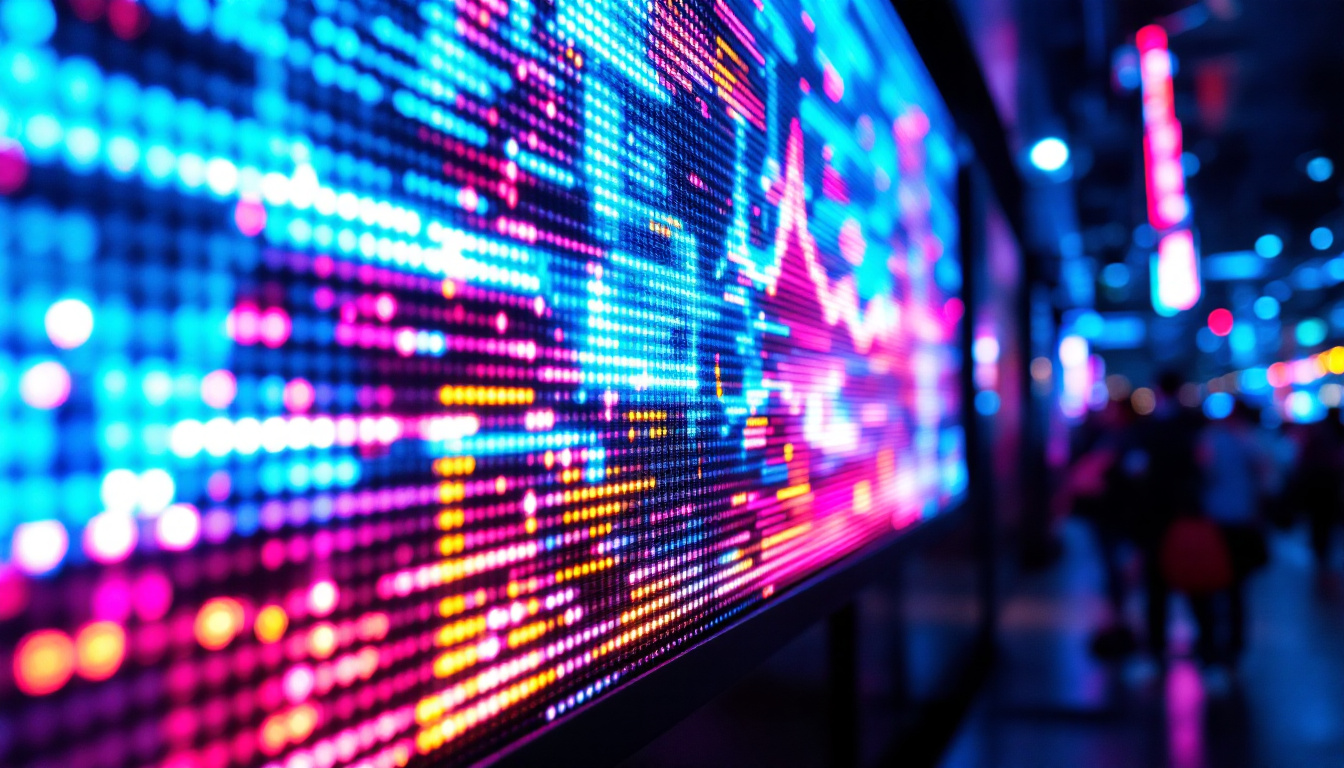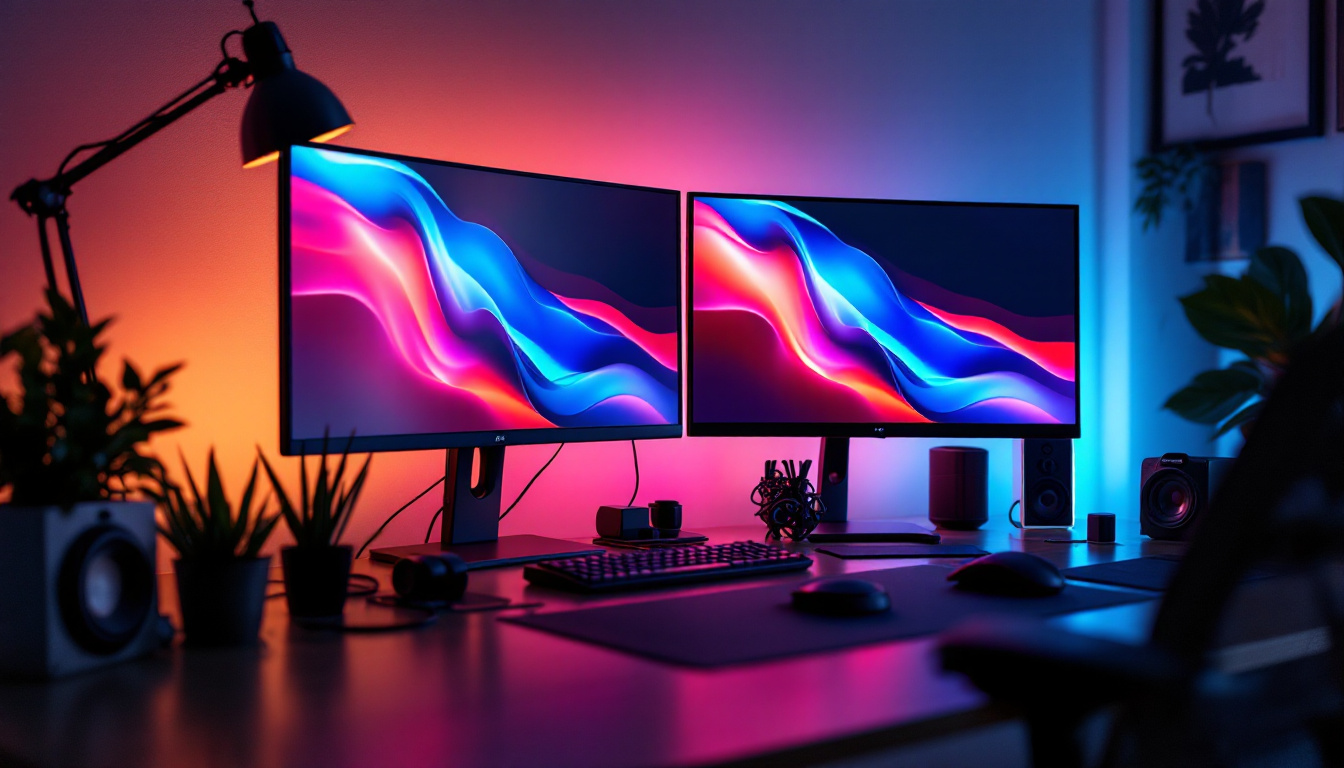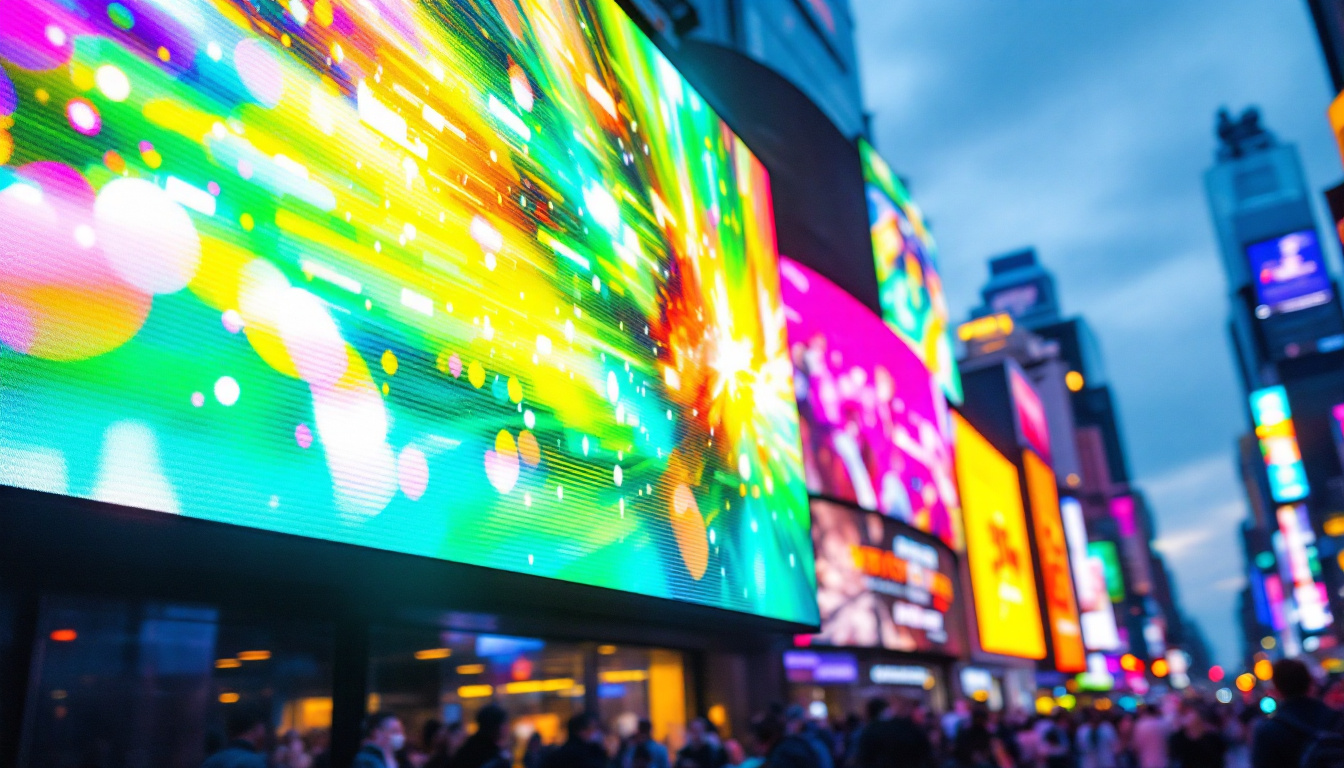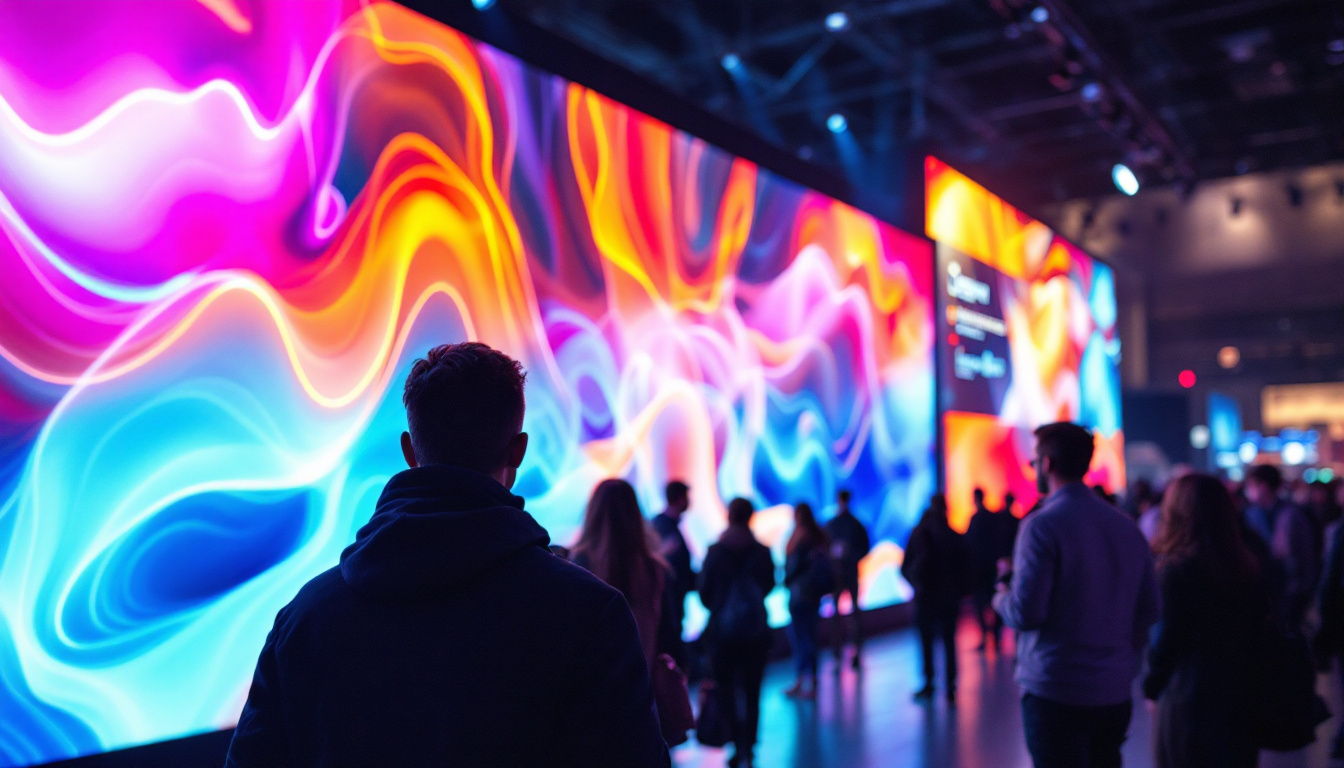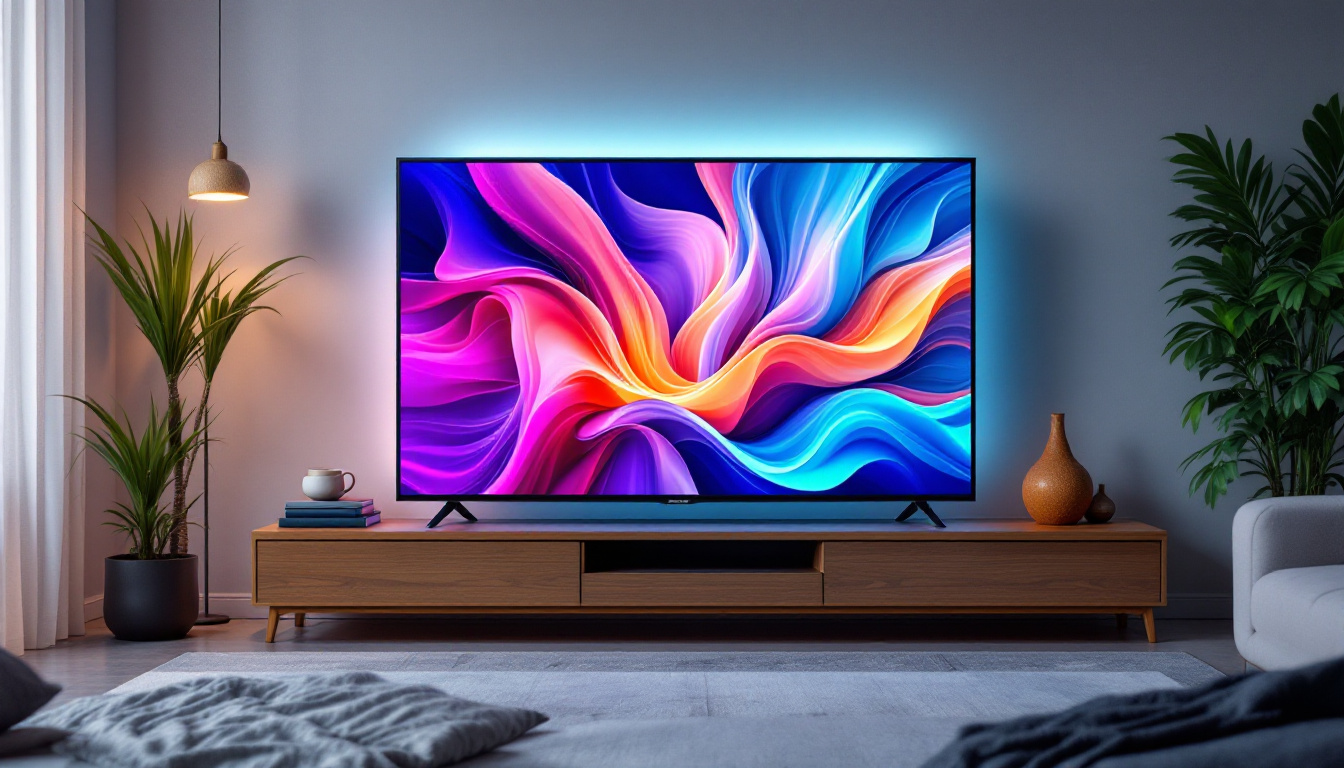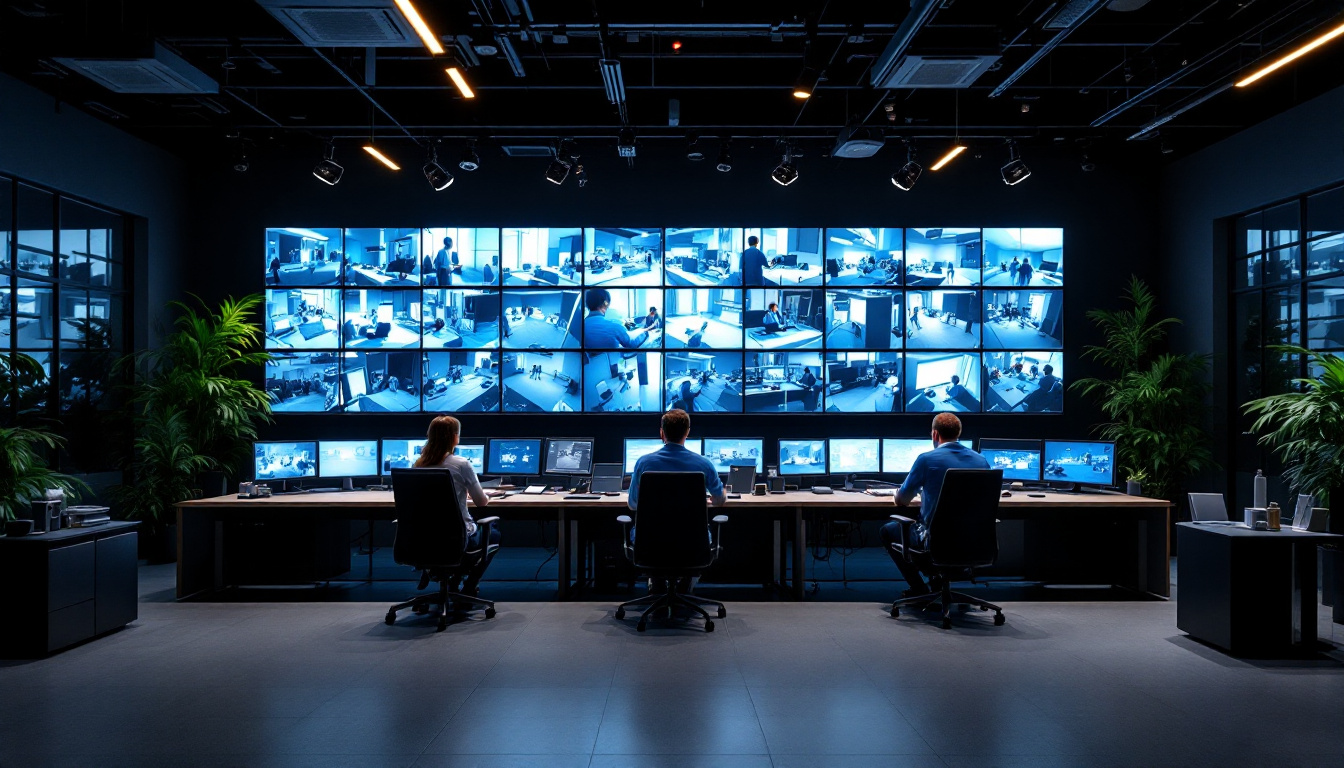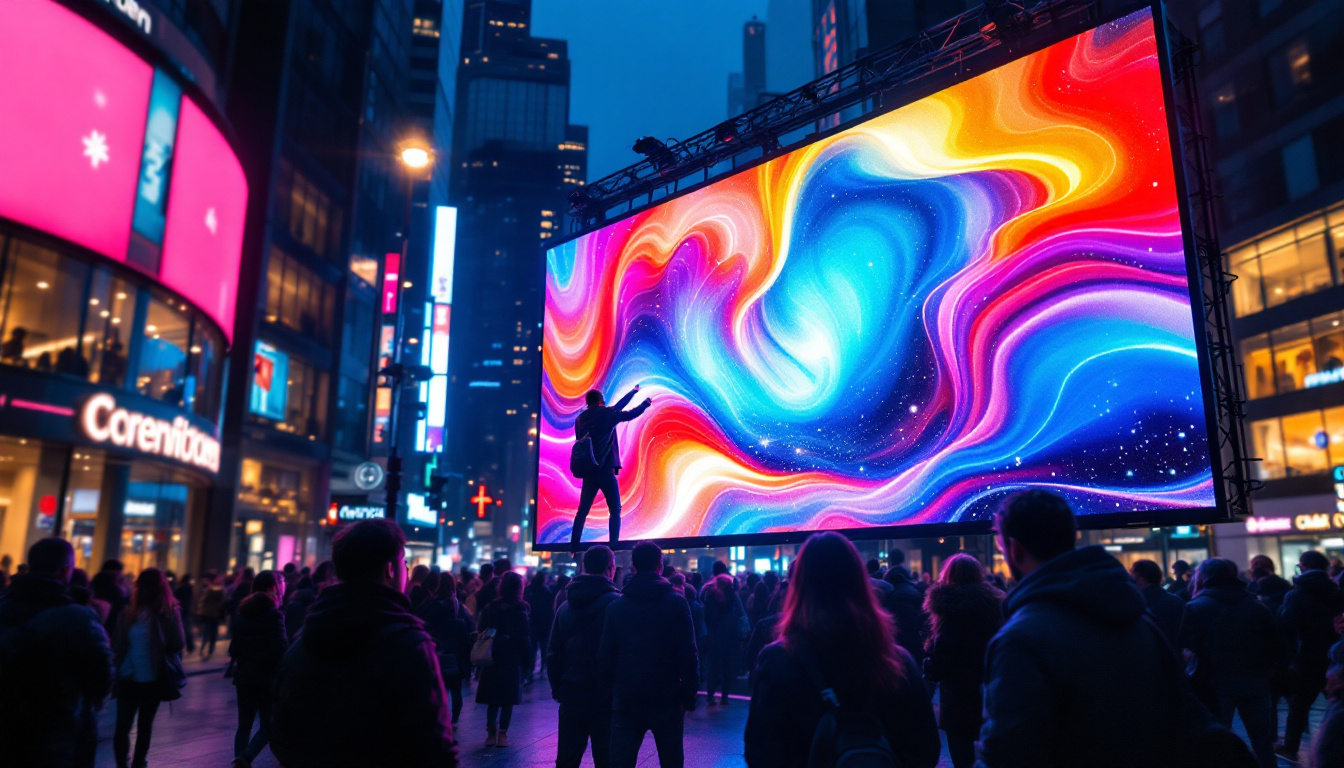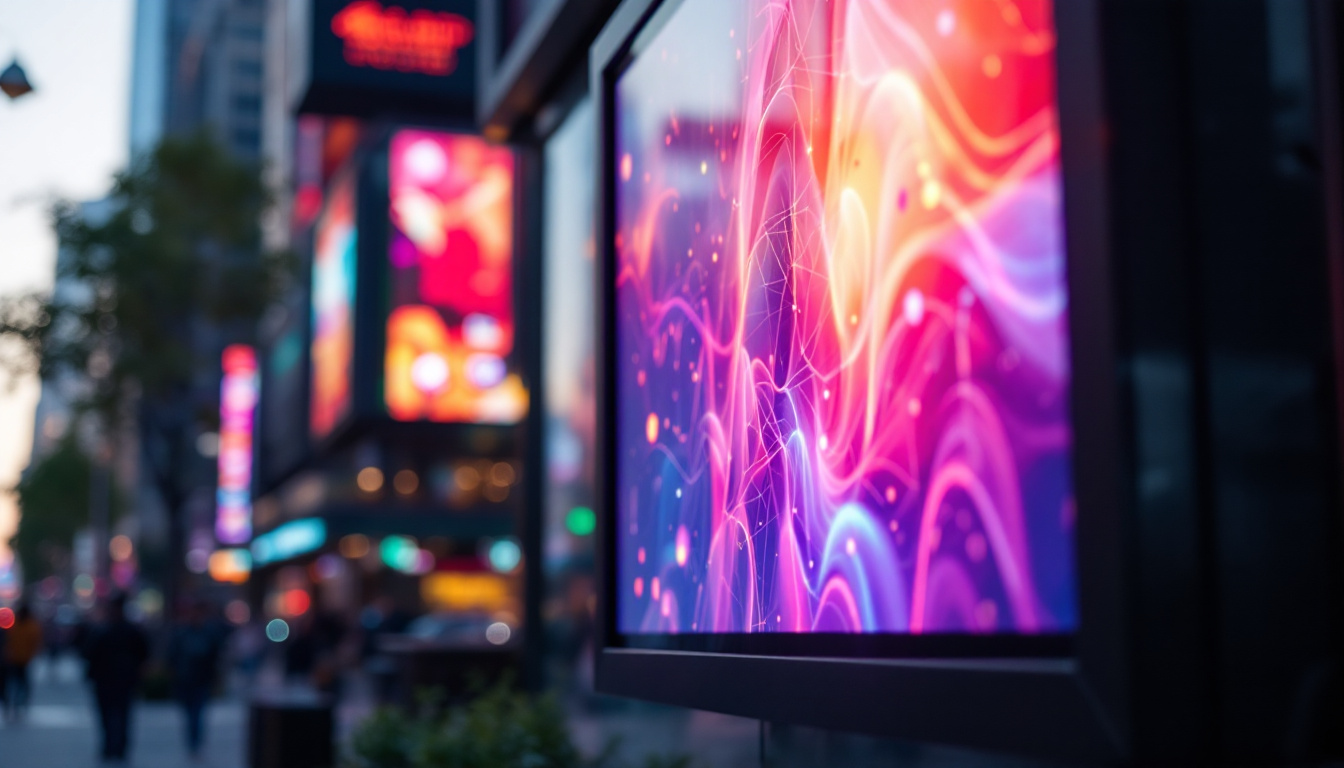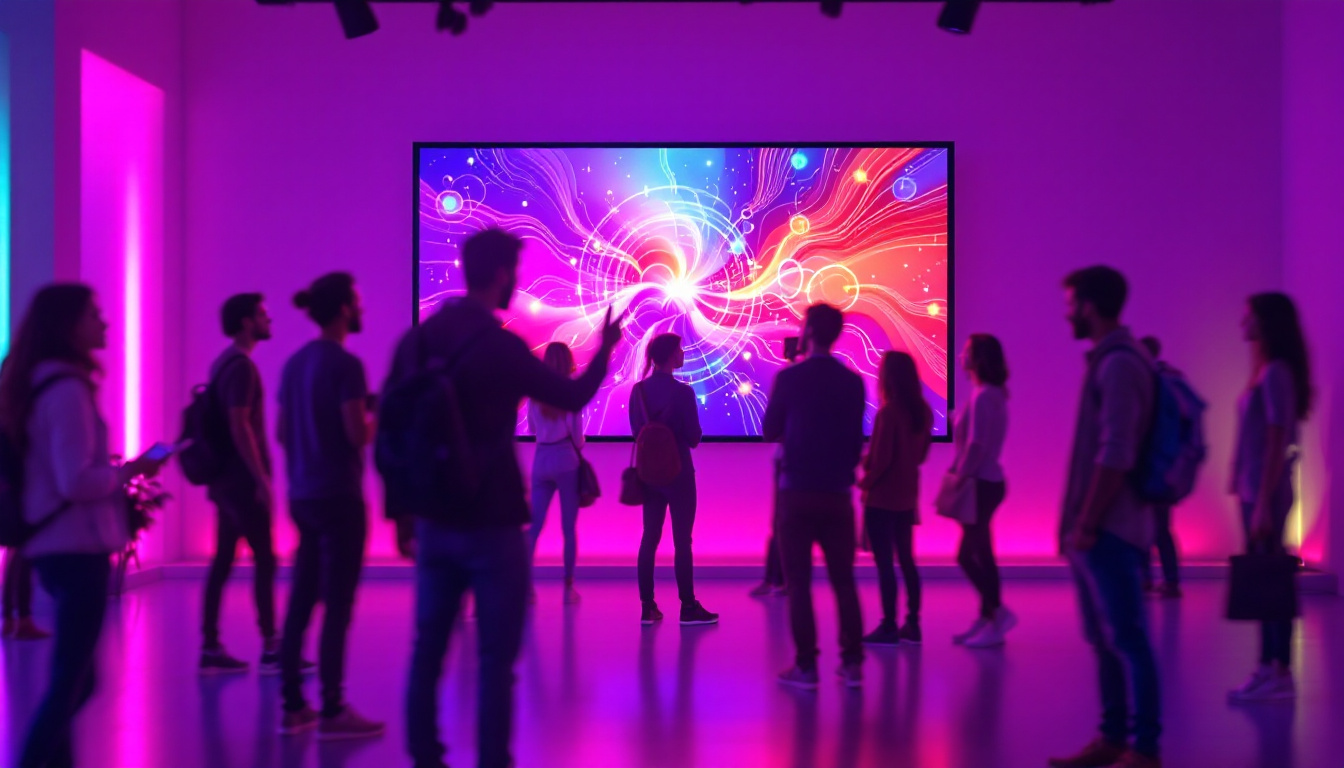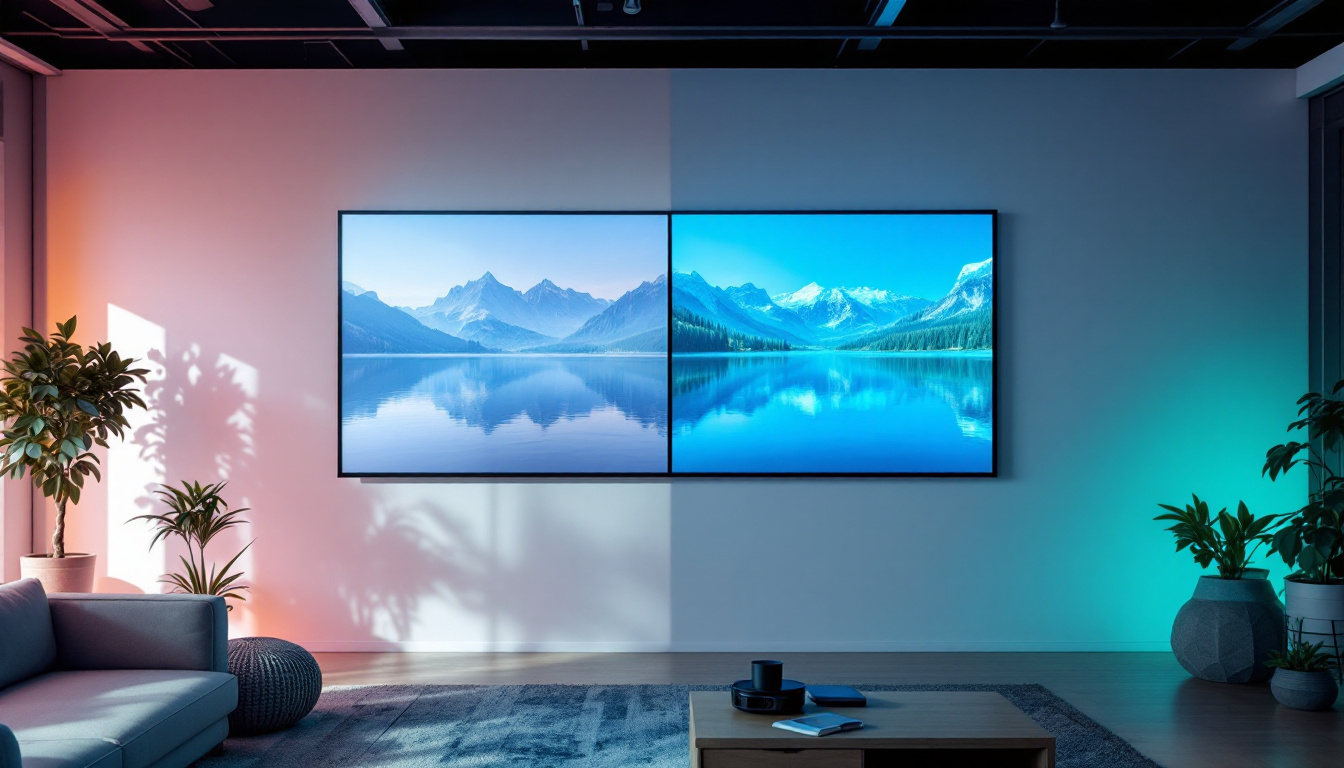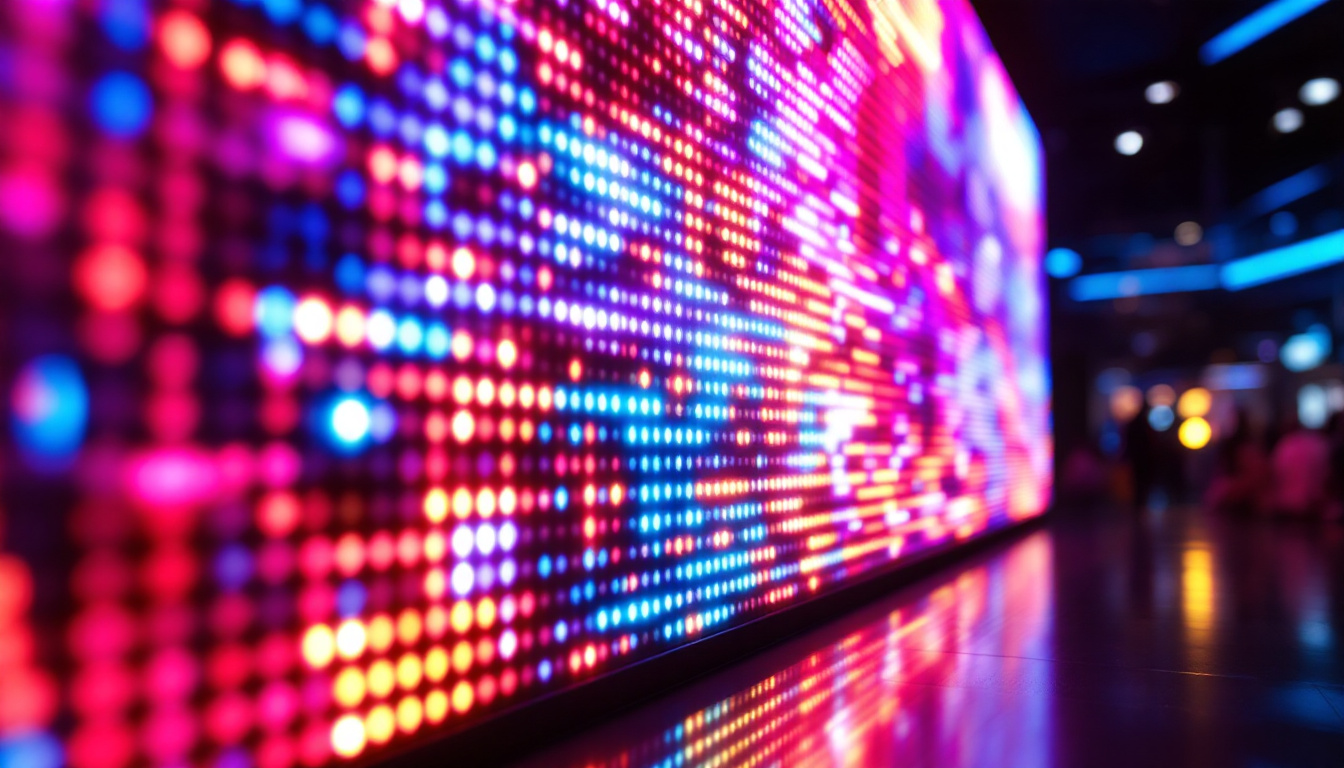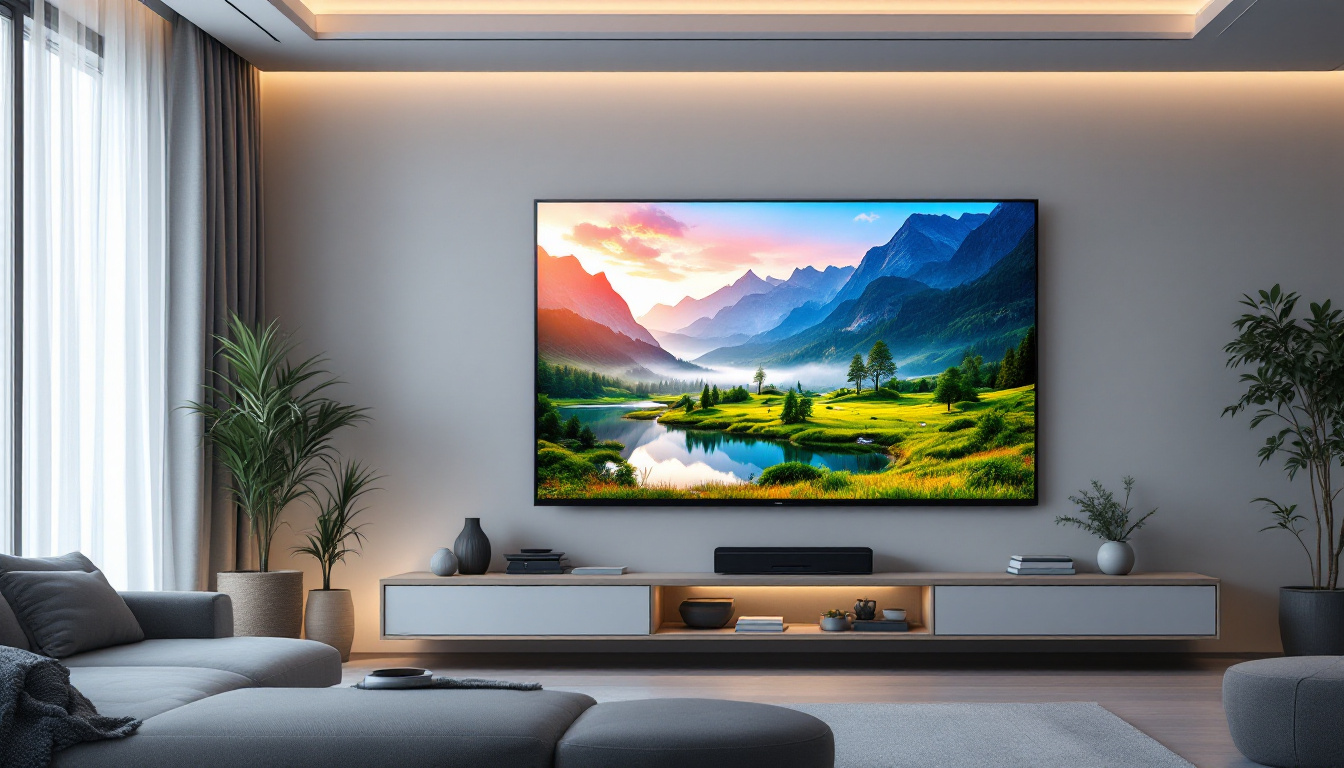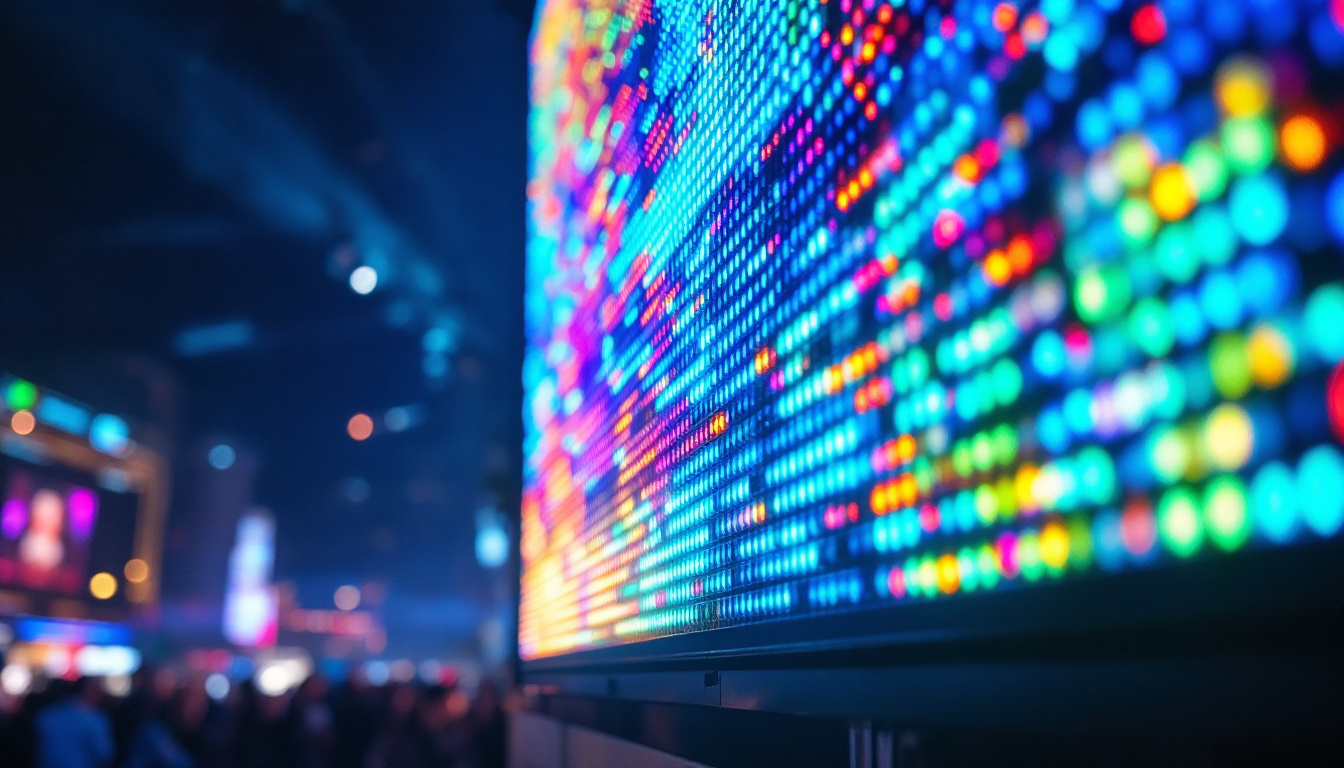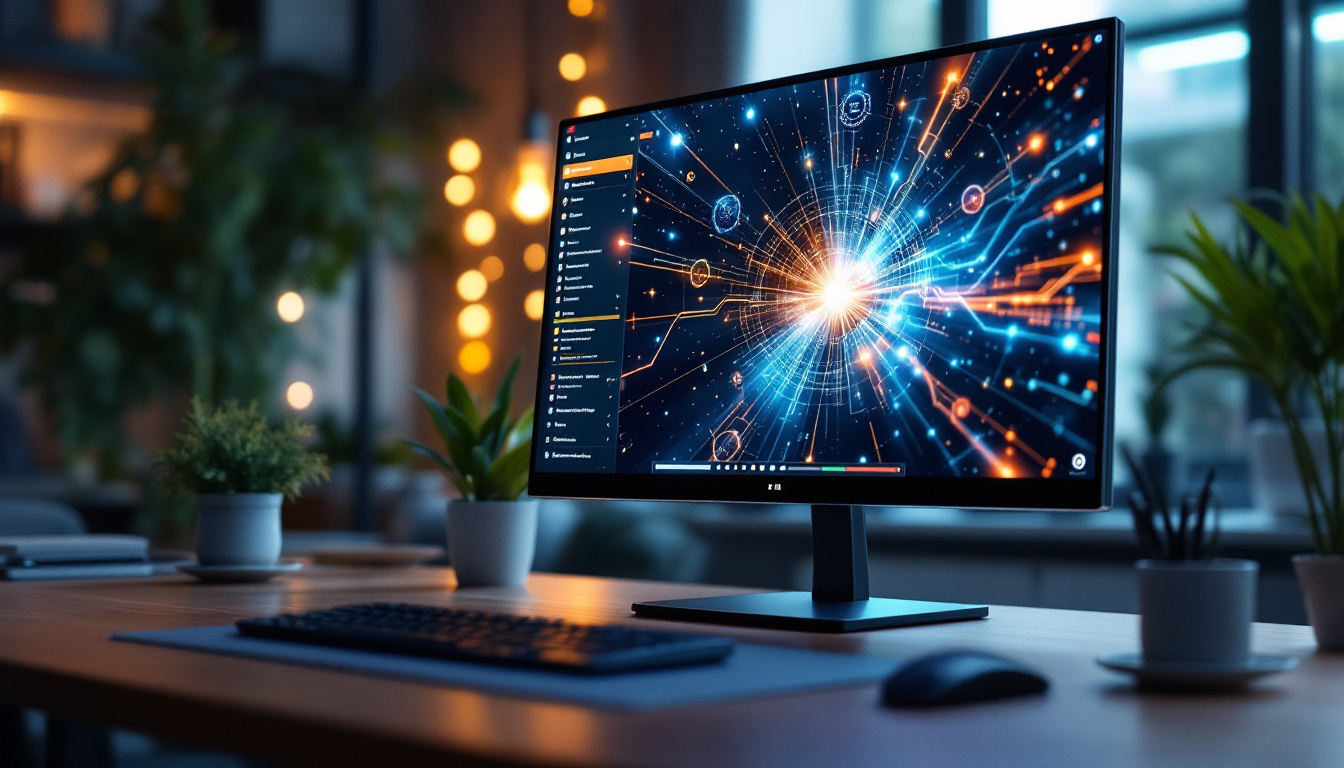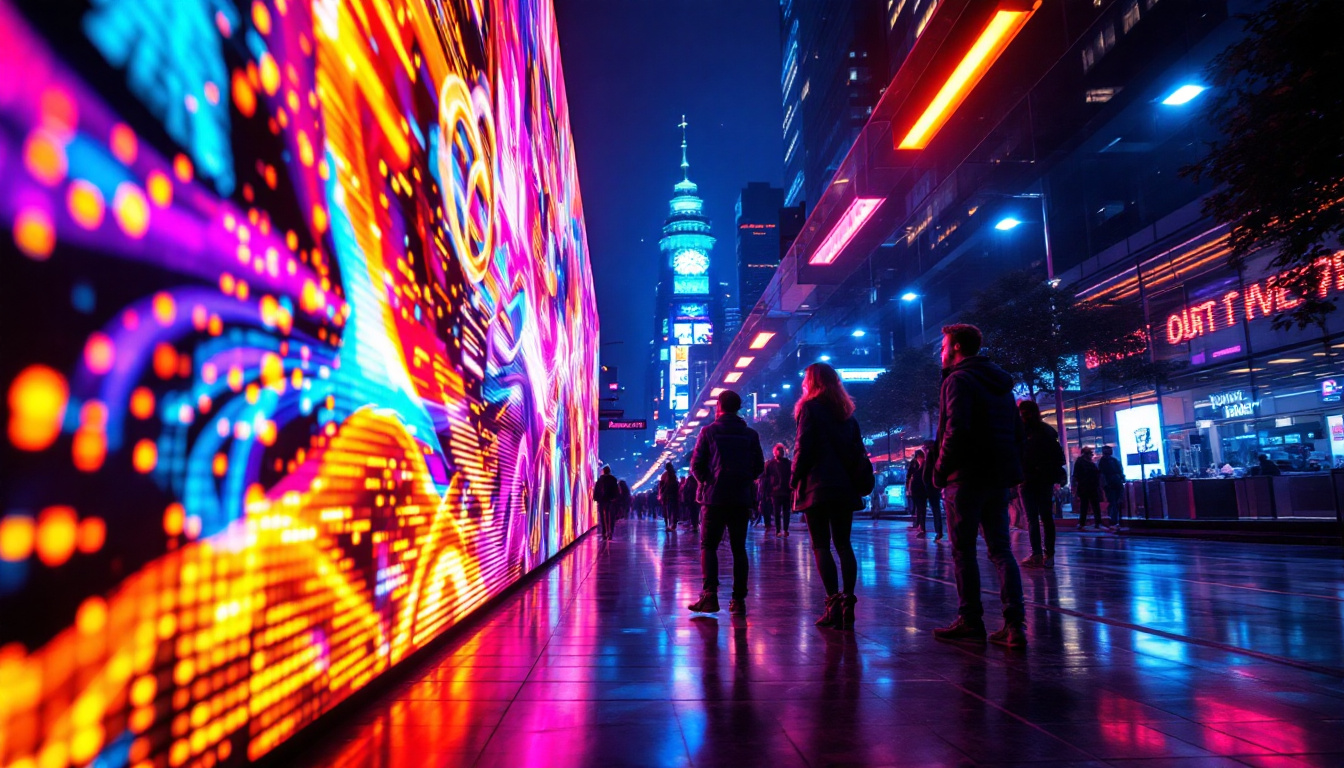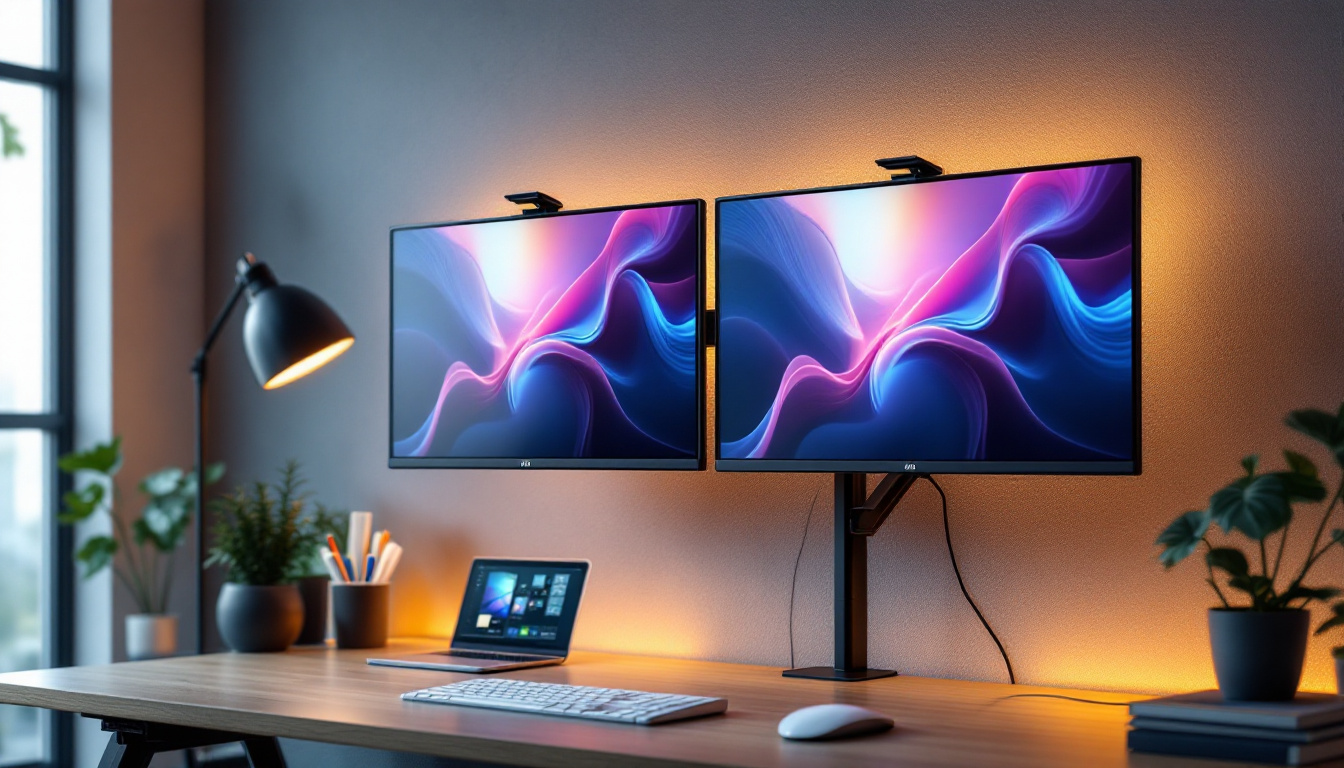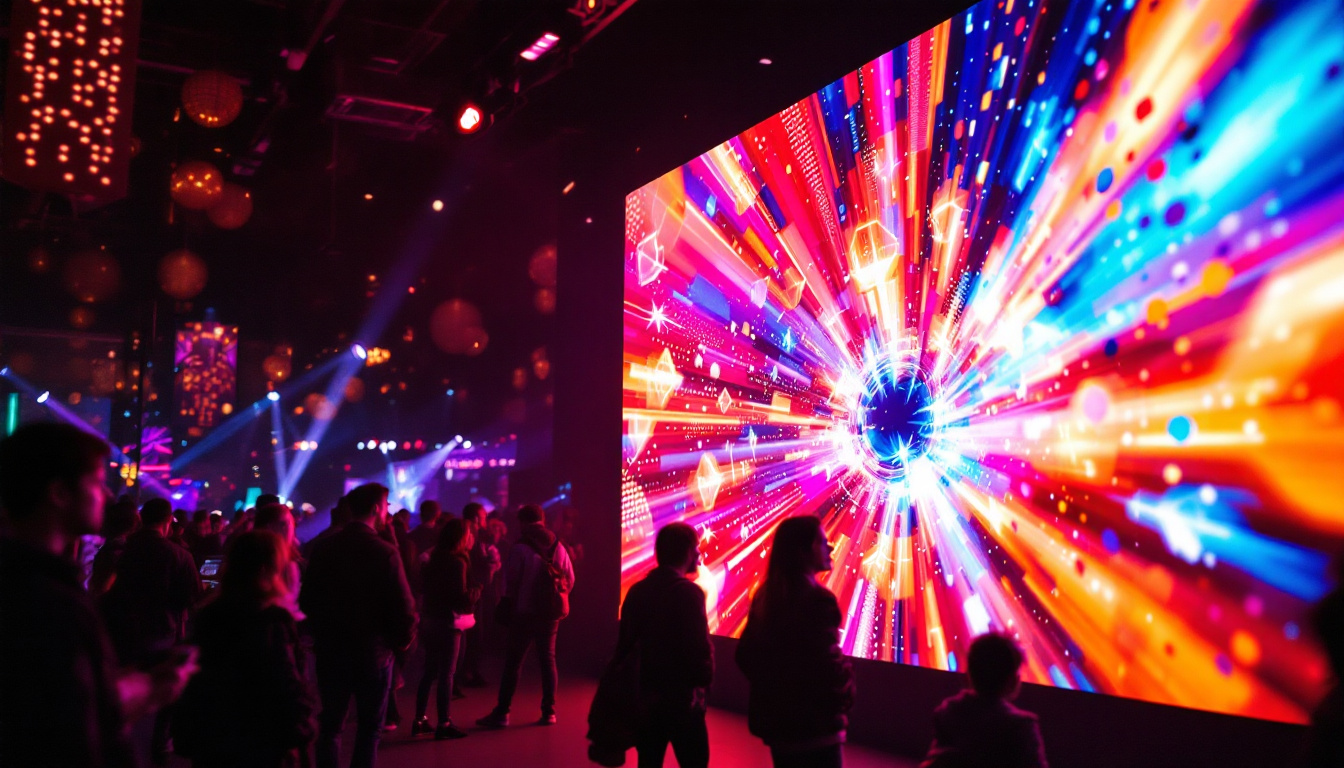In the modern world, LED displays have become ubiquitous, transforming the way information is presented across various platforms. From advertising billboards to digital signage in retail spaces, the versatility and efficiency of LED technology have made it a preferred choice for many applications. This article aims to delve into the intricacies of LED displays, exploring their functionalities, advantages, and the technology behind them.
Understanding LED Technology
Light Emitting Diodes (LEDs) are semiconductor devices that emit light when an electric current passes through them. This technology has evolved significantly over the years, leading to the development of vibrant and efficient displays. The fundamental principle behind LED displays is simple: they consist of numerous tiny LEDs arranged in a grid, which can be controlled individually to create images or videos.
The Basics of LED Displays
LED displays can be categorized into two main types: direct view and rear projection. Direct view displays are the most common, where the viewer sees the light emitted directly from the LEDs. Rear projection displays, on the other hand, project images onto a screen from behind, using a combination of LEDs and optics.
Each LED in a display typically consists of a red, green, and blue (RGB) component. By varying the intensity of these three colors, a wide spectrum of colors can be produced. This RGB model is foundational to creating the vibrant images that LED displays are known for. The precision with which these colors can be mixed allows for the display of millions of hues, enhancing the viewing experience in applications ranging from television screens to digital signage.
Types of LED Displays
There are several types of LED displays, each serving different purposes and environments. The most common types include:
- Indoor LED Displays: These are designed for use in controlled environments, such as shopping malls, conference rooms, and theaters. They often have a higher pixel density, resulting in clearer images at closer viewing distances.
- Outdoor LED Displays: Built to withstand the elements, outdoor displays are typically larger and have lower pixel densities, making them suitable for viewing from greater distances. They are commonly used for billboards and sports stadiums.
- Transparent LED Displays: These innovative displays allow light to pass through, making them ideal for retail environments where visibility is crucial. They can be used in windows or as partitions without obstructing the view.
In addition to these common types, there are also specialized LED displays designed for specific applications. For instance, flexible LED displays can be bent or shaped to fit unique spaces, making them perfect for creative installations in art galleries or exhibitions. Furthermore, high dynamic range (HDR) LED displays are becoming increasingly popular due to their ability to produce deeper blacks and brighter whites, enhancing the overall contrast and detail in images. This technology is particularly sought after in professional settings like film production and high-end gaming, where visual fidelity is paramount.
Moreover, the advancements in LED technology have paved the way for interactive displays that respond to touch or motion. These displays are revolutionizing user engagement in various sectors, from retail to education, allowing for immersive experiences that captivate audiences. As LED technology continues to evolve, the possibilities for innovative applications seem limitless, promising to reshape how we interact with visual content in our daily lives.
Advantages of LED Displays
The popularity of LED displays can be attributed to several key advantages that set them apart from traditional display technologies. Understanding these benefits can help businesses and organizations make informed decisions about their display needs.
Energy Efficiency
One of the most significant advantages of LED displays is their energy efficiency. Compared to traditional incandescent or fluorescent displays, LEDs consume significantly less power. This efficiency not only reduces electricity bills but also contributes to a lower carbon footprint, making LED displays an environmentally friendly choice.
Longevity and Durability
LED displays are known for their long lifespan, often exceeding 50,000 hours of operation. This longevity translates to lower maintenance costs and reduced frequency of replacements. Additionally, LEDs are more durable than other display technologies, as they are less susceptible to damage from shocks and vibrations.
High Brightness and Contrast
LED displays offer exceptional brightness levels, making them suitable for both indoor and outdoor environments. Their high contrast ratios ensure that images remain clear and vibrant, even in direct sunlight. This capability is particularly beneficial for advertising and promotional displays, where visibility is crucial for attracting attention.
Applications of LED Displays
LED displays are versatile and can be utilized in various sectors, each benefiting from the unique features that LED technology offers. Here are some prominent applications:
Advertising and Marketing
In the advertising industry, LED displays have revolutionized how brands communicate with consumers. Dynamic content can be displayed, allowing for real-time updates and engaging visuals that capture attention. From large-scale billboards to smaller displays in retail stores, LED technology enables brands to create impactful marketing campaigns.
Entertainment and Events
Concerts, sports events, and festivals often utilize LED displays for stage backdrops and scoreboards. Their ability to display high-resolution images and videos enhances the overall experience for attendees. Furthermore, LED screens can be configured in various shapes and sizes, providing creative opportunities for event organizers.
Transportation and Wayfinding
In transportation hubs such as airports and train stations, LED displays serve as vital information boards. They provide real-time updates on schedules, delays, and directions, helping passengers navigate their journeys efficiently. The clarity and visibility of LED displays ensure that information is easily accessible, even in bustling environments.
Technical Considerations for LED Displays
When selecting an LED display, several technical factors must be considered to ensure optimal performance and suitability for the intended application. Understanding these elements can aid in making informed decisions.
Pixel Pitch
Pixel pitch refers to the distance between the centers of adjacent pixels. A smaller pixel pitch results in a higher pixel density, which translates to better image quality at closer viewing distances. Conversely, a larger pixel pitch is more suitable for outdoor displays viewed from a distance. Selecting the right pixel pitch is crucial for achieving the desired visual clarity.
Brightness Levels
Brightness is measured in nits, and the required brightness level depends on the display’s environment. Indoor displays typically require lower brightness levels, while outdoor displays must be significantly brighter to combat sunlight and ambient light. Understanding the brightness requirements for specific applications is essential for ensuring visibility and impact.
Refresh Rate
The refresh rate of an LED display determines how often the image is updated per second. A higher refresh rate results in smoother motion, which is particularly important for video content. For applications such as live events or broadcasting, a refresh rate of at least 60 Hz is recommended to avoid flickering and ensure a seamless viewing experience.
Installation and Maintenance of LED Displays
Proper installation and maintenance are critical to maximizing the lifespan and performance of LED displays. Understanding the installation process and ongoing care can help ensure that displays function optimally.
Installation Process
Installing an LED display involves several steps, including site assessment, structural support considerations, and electrical setup. It is essential to work with experienced professionals who can ensure that the display is securely mounted and properly connected to power sources and control systems. Additionally, the location should be evaluated for optimal viewing angles and accessibility.
Regular Maintenance
While LED displays are known for their durability, regular maintenance is still necessary to ensure optimal performance. This includes routine cleaning to remove dust and debris, checking for any damaged pixels, and ensuring that the electrical components are functioning correctly. Implementing a maintenance schedule can help identify potential issues before they escalate, prolonging the display’s lifespan.
The Future of LED Displays
The future of LED display technology is promising, with ongoing advancements that continue to enhance their capabilities. Innovations in areas such as flexibility, resolution, and interactivity are shaping the next generation of displays.
Flexible LED Displays
Flexible LED displays are emerging as a game-changer in the industry, allowing for creative applications that were previously unattainable. These displays can be bent or shaped to fit various surfaces, enabling unique installations in retail spaces, art installations, and architectural designs. The flexibility opens up new avenues for creativity and design.
Higher Resolutions
As technology progresses, the demand for higher resolution displays continues to grow. MicroLED technology, which utilizes microscopic LEDs, is paving the way for displays with incredible pixel densities. This advancement allows for ultra-high-definition images that are sharp and detailed, enhancing the viewing experience across various applications.
Interactive Displays
Interactivity is becoming increasingly important in the realm of digital signage. Touchscreen capabilities and integration with mobile devices are transforming how audiences engage with LED displays. This interactivity can enhance customer experiences in retail environments, allowing for personalized interactions and dynamic content delivery.
Conclusion
LED displays have undoubtedly transformed the landscape of visual communication, offering a blend of efficiency, durability, and versatility. As technology continues to advance, the possibilities for LED displays are expanding, paving the way for innovative applications across various sectors. Understanding the intricacies of LED technology, its advantages, and its future potential can empower businesses and organizations to harness its capabilities effectively.
In a world where visual engagement is paramount, LED displays stand out as a powerful tool for communication, marketing, and entertainment. Their ability to adapt to various environments and applications ensures that they will remain a vital component of modern visual technology for years to come.
Discover the Future of Visual Engagement with LumenMatrix
Ready to elevate your visual communication and captivate your audience like never before? Explore LumenMatrix’s innovative LED display solutions, where cutting-edge technology meets creative design. From vibrant Indoor LED Walls to dynamic Outdoor LED Displays and beyond, LumenMatrix offers a diverse range of products tailored to your unique needs. Embrace the revolution in digital signage and create unforgettable visual experiences. Check out LumenMatrix LED Display Solutions today and see your brand in a new light.

